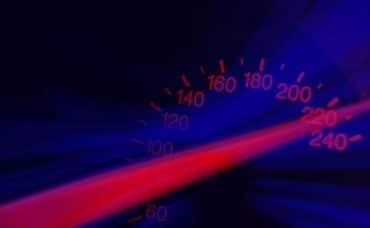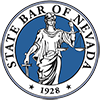
Nevada drivers rank 13th in the nation for deadly car crashes that involve excessive speeds. In 2018, 331 people died on Nevada roads, accounting for the highest traffic fatality rate in the last 10 years.
Speeding Drivers on Nevada Roads
Between 2013 and 2017, the Nevada Department of Traffic Safety projected a five-year average of 92 speed-related crash fatalities, including car, truck and motorcycle accidents. The actual number of fatalities was 104. In 2018, there were 331 traffic deaths, and close to 40% were related to speeding drivers. According to 2018 traffic department safety records, Nevada law enforcement issued 24,693 citations to drivers in Nevada for speeding. This is by far the highest number of traffic citations issued across the state compared to all other types of driving offenses:
- 5,020 Citations – Talking or texting on a cell phone
- 3,666 Citations – Expired License plate registration
- 3,259 Citations – No car insurance
- 1,514 Citations – Unbuckled seat belts
- 1,486 Citations – Running red lights
- 1,151 Citations – Failure to yield
The Nevada Office of Public Safety and other state agencies work year-round to create safer Nevada roads and highways, yet fatalities from speed-related crashes continue to rise with 331 deaths in 2018 and 351 deaths in 2019. Many of these deaths are directly linked to speeding drivers who disobey posted speed limits and practice reckless driving behaviors.
According to the National Transportation Safety Board (NTSB), the severity of injury rises significantly as the speed of the car increases. In a car crash at 30 mph, the survival rate is about 60%. At a speed of 50 mph, the survival rate falls to 40%. At speeds over 65 mph, the survival rate falls to just 30%.
National Traffic Statistics
According to NTSB, speeding contributes to about one-third of all U.S. yearly traffic fatalities. Between 2005 and 2014, 113,000 deaths in the United States. were caused by speed-related car crashes. In 2016, teen drivers between ages 15 to 20 represented the highest number of speed-related traffic fatalities, compared to any other age group. In 2018, excessive speed was a factor in 31% of teenage driver fatalities. The risk of a deadly car crash is the highest during the first year of getting a driver’s license.
Even a small increase in speed of 10 mph raises a person’s risk of a car crash by 9.2%. NTSB traffic safety studies show that most adult drivers admit to driving at least 10 mph over the posted speed limit more than 50 % of the time. Most teenage drivers report that they do not consider driving 5 to 10 miles above the speed limit to be speeding.
Speeding is reckless driving behavior that puts lives at risk. Studies show that young male drivers between the ages of 19 and 39 are much more likely to engage in reckless and aggressive driving behaviors. High-speed crashes seen by auto accident attorneys are commonly linked to other risky driving behaviors including alcohol and/or drug use, phone and radio distractions, street racing, and driver fatigue or sleep deprivation.
Out of the six million car crashes that occur every year in the U.S., 22% are related to bad weather conditions, especially during winter months. Every year, 24% of weather-related car crashes occur on roads or highways covered in snow, slush, or ice, and 15% occur when it’s snowing or sleeting. Speeding during bad weather conditions significantly increases a driver’s risk of serious injury or death. It takes up to 10 times longer to stop on a road with snow and ice than it does on dry pavement. To prevent serious accidents, speeds should be reduced to about 40 mph in light snow, and about 25 mph in heavy snow.
Road Safety Across the Country
NTSB and law enforcement officials are urging motorists to slow down to prevent traffic accidents that result in severe injuries and deaths for hundreds of thousands of Americans every year. Cities across the country are examining their road designs and speed limits, especially in urban areas where pedestrian and cyclist injuries occur frequently. Some cities are getting drivers to slow down by adding crosswalks, raised speed bumps, and street islands or curb bump-outs. In Las Vegas, barriers are getting installed along The Las Vegas Strip where Reno auto accident attorneys see a high number of pedestrians hit by cars. In Boston, traffic safety officials are redesigning streets that slow drivers down to 20 mph in five busy communities.
Redesigned streets that force slower traffic are helping to prevent high-speed car crashes that take lives. New vehicles with GPS systems and sign-reading sensors are alerting drivers when they exceed the speed limit. Traffic safety officials recommend these features on all new vehicles and promote their use in new car safety ratings for consumers.









